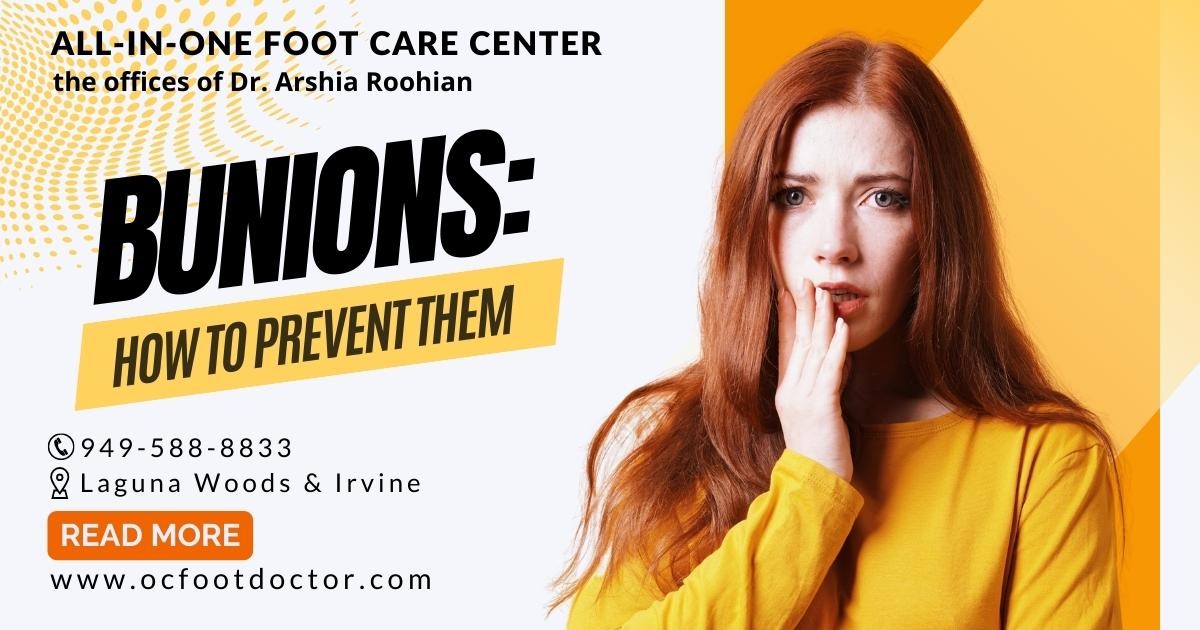Bunions: How to Prevent Them

A bunion is one of the most common foot problems among adults. You can get bunions at any age, but some studies indicate that up to one-third of adults suffer from them. In addition, you may be more likely to get bunions if bunions or other foot conditions run in your family or if you suffer from certain medical conditions.
Is there a way to prevent bunions from forming? Or if you already have bunions, how can you prevent them from getting worse? We'll answer these questions and more below.
Managing and preventing bunions: 5 steps to get started.
1. Ensure that your shoes are the right size and fit
.jpg)
In order to prevent bunions, it is important to wear the right kind of shoes. Uneven pressure or rubbing on your toes can lead to bunions. In order to avoid bunions, you should wear the following types of shoes:
- Instinctive comfort – It doesn't matter how many times you slip your feet into a pair of shoes for the first time, it shouldn't feel pinching or rubbing. It's not a good idea to have to break in a pair of shoes for weeks or months. This puts pressure on your feet. The shoes you wear should feel sturdy, but comfortable. Shop with instant comfort in mind when shopping.
- Fit and size – Make sure your shoes are the right length and width for your foot. Avoid tight, narrow, or pointy shoes, and look for styles that can accommodate your instep. The instep of your foot is the top of your foot, so slipping your feet into a pair should not be an issue. Ensure that your shoes have a broad toe box that prevents your toes from touching and soft soles that provide comfort and support.
- A good arch support will distribute pressure evenly, whether you're walking or standing, rather than putting it all on your balls or heels. Many shoes come with built-in arch supports, but you may need an arch support insert for maximum comfort.
Do changing your shoes help prevent bunions from getting worse if you already have one?
There is no way to reverse a bunion once it has formed, but the right shoes can help relieve foot pain. They can also alleviate pressure on your toe joint.
2. Wearing high heels every day (or avoiding them altogether) is not recommended.
.jpg)
In particular, high heels put pressure on your big toe joint. If you can give up heels in favor of supportive flats, do it. If you're not quite ready to give up heels, consider trading them out a few days a week.
Also, if you plan on wearing heels, keep the height under two inches to minimize pressure. You can also choose wedges or block heels since these are the most effective at distributing weight.
3. Give your feet a rest
_2.jpg)
Get off your feet after standing or moving around for a while, especially when you've been standing for a while.
Even if you wear bunion-preventing shoes, take your shoes off for a few minutes throughout the day to let your feet breathe.
4. Strengthen your feet by doing bunion stretches and exercises
_2.jpg)
Using specific exercises can strengthen and stretch your feet, thereby improving your overall foot health, reducing foot and ankle pain, relieving muscle soreness, and keeping you active.
Exercises to prevent (or manage) bunions.
Perform two or three sets of these exercises twice a day to improve the strength and flexibility of your feet:
- From a seated position on a chair, pick up ten to twenty small objects and place them into a container using your toes.
- For five minutes, lay out a small towel on the floor and sit on it with your toes reaching the towel. Curl your toes around the towel and pull it toward you with your knees bent.
- With your feet off the floor, curl your toes as far as they will go as you stretch. Whenever you stretch your big toes, pull them up with an exercise band for five seconds at a time. Repeat 10 times. You can also stretch your big toes by pulling them up with an exercise band. When you're stretching the toe, push back through it to make it a resistance exercise.
- Using your foot, roll a can or tennis ball along and around the length of each foot for two to three minutes while sitting in a chair.
5. Be aware of any changes in your feet
In order to catch subtle signs of bunions earlier, paying attention to changes in your feet may be helpful. Pain, swelling, and redness of the big toe joint are some of the earliest signs of bunions.
Your big toe may have advanced if it's developing a lump or bump on its side, or if it is turning inward toward the other toes.
If you experience bunion pain, call a podiatrist. Podiatrists specialize in diagnosing and treating foot and ankle conditions, and they can guide you to the right treatment.
Progress must be kept up.
_2.jpg)
A good pair of shoes is the best place to start if you want to prevent your bunions from getting worse or preventing them altogether. It is possible to protect your feet from painful foot conditions, including bunions, with the right pair of shoes.
A little rest, exercise, and attention can help keep your feet healthy, but if you're experiencing pain or changes around your big toe joint, see a podiatrist for a diagnosis and treatment plan.
You can contact our office at 949-588-8833 , or visit our website at https://www.ocfootdoctor.com/ Our offices are located in Laguna Hills, Irvine, Mission Viejo, Aliso Viejo, Lake Forest, Foothill Ranch, and Costa Mesa.


